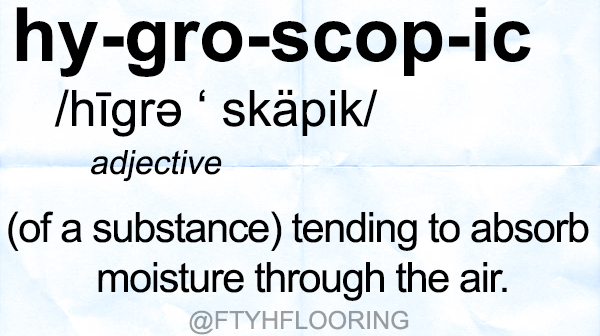How To Prevent Hardwood Issues This Summer

Ah, summer. Some of us flourish in the heat; some of us huddle up to the closest air conditioning and offer our thanks to the deities of modern convenience. We all have our needs during the season, but did you know your hardwood floors are the same way?
Think of it like this: You’re more likely to be exposed to hot sun and dangerous UV rays in the summertime than you are in winter. Sunburn is painful in the short term and can cause skin damage down the line. In order to avoid this you take a preventative measure, like wearing a hat or applying sunscreen. You’re stopping the damage before it starts.
With hardwood floors in the summertime, your concerns could be due to increased moisture in the air, known as Relative Humidity or simply RH. When wood gains moisture, it expands, and expansion can lead to problems like cupping, buckling, and distortion. It’s important to note that expansion is NOT symptomatic of a poor installation job or shoddy work: hardwood is a natural product and so it’s subject to changing environmental conditions just like we are! There’s even a special word for it:

Want to know how to handle your hardwoods this summer? Read on.
Prevention
While there’s no one whizz bang solution to prevent all seasonal hardwood concerns from developing into full-blown problems, there are a few ways to reduce the odds of trouble arising down the line.
• Acclimation Letting your floor acclimate to its new environment for a sufficient amount of time prior to installation is critical; at least 48 hours is a good starting point but your time may vary. This post on acclimating your new floors in our Expert Center goes into more depth.
• Narrower Boards Hardwood boards that are narrower in design expand and contract less than their wider counterparts.
• Engineered Construction Did you know engineered hardwood was actually designed as a more stable alternative to traditional solid hardwood? Now you do! It’s better at withstanding environmental changes than solid hardwood material.

Moisture Removal
There are several common ways to remove moisture from the air in your home. The first option is ventilation, simply throwing the windows open and letting nature do the work, but this method is highly dependent on your local climate and favors cold, arid locations. If the dew point – the temperature at which moisture in the air condenses into dew - is any higher than 60 degrees, opening up your home for ventilation will do more harm than good.
The next options are mechanical in nature. First off, there’s air conditioning. The catch? An air conditioner only wicks moisture away when it’s running. If you’re an energy-conscious person who likes to turn the AC down when you’re away from home, this might not be the best choice. The next option is a dehumidifier. They’re available in a huge range of sizes, from miniature to massive to those that go to work in your whole house. Dehumidifiers are great for areas that get less attention from a standard air conditioning, like basements and crawl spaces.
With a little care and some forethought, you and your hardwood floors can survive summer in great shape!
Follow Team Floors To Your Home on Facebook

 Brown Tone
Brown Tone
 Unfinished
Unfinished
 Red Tone
Red Tone
 Golden Tone
Golden Tone
 Gray Tone
Gray Tone
 Light Tone
Light Tone
 Medium Tone
Medium Tone
 Dark Tone
Dark Tone
 Brown Tone
Brown Tone
 Red Tone
Red Tone
 Golden Tone
Golden Tone
 Gray Tone
Gray Tone
 Light Tone
Light Tone
 Medium Tone
Medium Tone
 Dark Tone
Dark Tone
 Brown Tone
Brown Tone
 Red Tone
Red Tone
 Golden Tone
Golden Tone
 Gray Tone
Gray Tone
 Light Tone
Light Tone
 Medium Tone
Medium Tone
 Dark Tone
Dark Tone
 Multi Color
Multi Color
